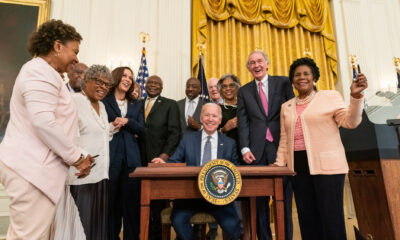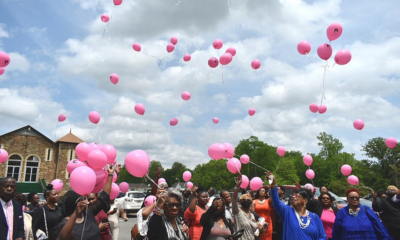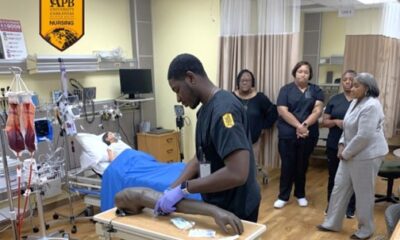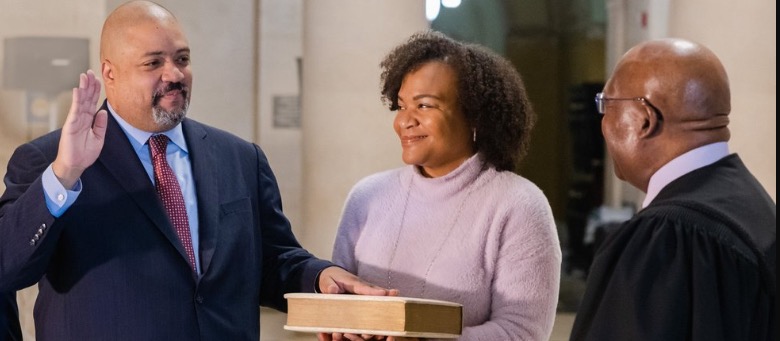During the decades when Black people were being suppressed and subjugated by racist laws, many fought to carve out their own place in a segregated society. The results were black-owned businesses, churches and clubs. Some led the way to establish their own neighborhoods, organizations and newspapers. They built their own banks, schools and parks. And these became legacies of their fight and their success. But many of these legacies have been neglected and forgotten. For Black History Month, TheVillageCelebration will look at some of these abandoned legacies.
Henrietta
Holloway Hicks can still remember the stories her family told her about Boley.
When her uncles, who looked white, were chased out of their Black Louisianna neighborhood
for being friendly with white girls, the family sought refuge in the small Oklahoma
town.
They became
one of the original settlers of the predominantly Black town that would soon see
a population numbered in the thousands and become known by many for its
prosperity.
It was the
early 1900s and the Fort Smith & Western Railroad was still using steam
engines that had to be filled with water for at least every six miles. It made
a stop in Oklahoma. And two men, one a manager for the railroad, saw a few
black families living in the area.
At that
time, “There were shotgun houses and dugouts, log cabins people threw up just
to have a place to live in,” said Hicks, who at 85 is considered the town’s
historian.
The men
decided to build a town and Boley
was officially opened for settlement in 1903 in Creek Nation, Indian
Territory. The group that founded Boley: Lake Moore, a white attorney;
John Boley, the white manager for the railroad; and Thomas M. Haynes, a black
farmer and entrepreneur from Texas, began by buying property from a child.
With the help of
James Barnett, a Creek Freedman, they purchased the land of Barnett’s 12-year-old
daughter, Abigail, to establish Boley’s base, Hicks said. At that time,
Native Americans had slaves who, after they were freed, were given land, Hicks
said.
The men then reached
out to Black people who came from all over, Hicks said.
“They
brought in this man, planted the town and invited other Blacks who were running
away from segregation. They came by the droves. They came by the carload. They
came by the train-load.”
If You
Build It…
Many in search of freedom
and better opportunities flocked to Boley and the town grew to become the
largest predominantly black town in the United States. During the early part of the 20th century, it was one of the
wealthiest Black towns in the nation, according to online reports.
It boasted two banks,
including the first nationally chartered bank owned by Blacks, three cotton
gins and its own electric company and water system.
It had people of all professions including seven physicians
and a hospital, three dentists, lawyers and architects, Hicks said. It had a
car dealership; grocery stores; hotels; restaurants; nightclubs; churches and
fraternal clubs. Its Masonic Lodge was reportedly called “the tallest
building between Okmulgee and Oklahoma City,” before it was destroyed by an arsonist.
Boley had a railroad depot, a post
office, a telephone company, and a power plant. It had a black
tuberculosis hospital and the State Training School for Negro Boys. All
who visited Boley, including Booker T. Washington, marveled at the ambition and
vigor of the townspeople, according to Blackpast.org.
By 1911, the town had more than 4,000
residents, and was home to two colleges: Creek-Seminole College, and Methodist
Episcopal College, according to online reports.
“Our schools were equal to none,” Hicks
said. When her mother went to school, she said, “they used to teach Latin. They
taught everything they thought Black people needed to learn.”
The schools were so well known that at
least five yellow buses would bring in students daily from the outlying areas
to attend the schools.
“We had our own schools. We had our own
everything. But when integration came, it changed things,” Hicks said. “People
just migrated and left.”
After Oklahoma’s statehood in 1907, the
citizens of Boley, like all Blacks in Oklahoma, struggled for their civil
rights.
“Although the day to day effects of
segregation were muted in Boley, most people in the town were disfranchised in
1910 when the grandfather clause became law,” according to Blackpast.org. “However,
Boley was an important location for all Blacks in the state as they worked to
fight disfranchisement for the next two decades.”
In addition to political turmoil, the
town also faced financial problems that plagued most small towns in the United
States at the time.
After World War I, a fall in agricultural prices and the
bankruptcy of the railroad helped lead to Boley’s failure. And it went bankrupt
in 1939 during the Great Depression.
Before World War II, Boley’s population had declined to about
700. And by 1960 most of the population had left for other urban areas.
The younger generations, after finishing school, left to find
work, said Hicks, who also left when she was in her 20s before returning almost
two decades later. Many of the farmers also left after the boll weevil began destroying
their cotton, she said.
“Then, of course, the government came along, saying you can only
grow a certain amount of acres of cotton,” Hicks said. That caused more people
to leave, she said.
Now there are about 500 residents left in
the town and about 800 to 900 inmates in the state’s minimum-security prison
that’s housed in the building that was once used for training incorrigible Black
boys, Hicks said.
Many of the buildings are old and have
been left abandoned in the small town by citizens who never returned, Hicks
said. Still, life in the town saunters on and Boley remains one of the state’s few remaining historic African American
towns. At one point the state of Oklahoma had about forty Black towns, Hicks
said. Now, she said, there are about thirteen and all of them have only a
handful of residents or more.
Boley,
home to many descendants of the town’s original settlers, still has the largest population. It still has a fire chief, a police chief and four reserve officers as
well as a judge, a mayor and its trustees. The post office is also still there.
Often, tourists come to visit the town
and a rodeo every Memorial Day weekend brings in thousands to the community.
“Boley was a very prosperous town, but
times bring about change,” Hicks said. Still, she wants people to know the
history of the town and its worth.
“People feel like
there is a bit of freedom when they come here,” Hicks said.
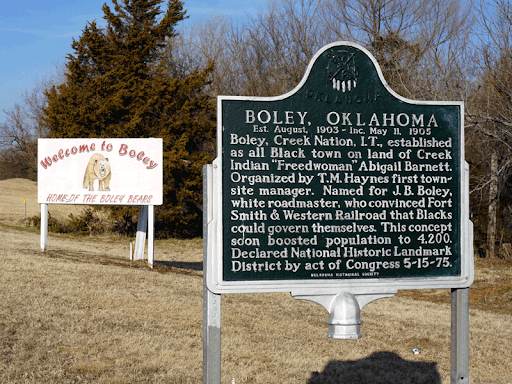
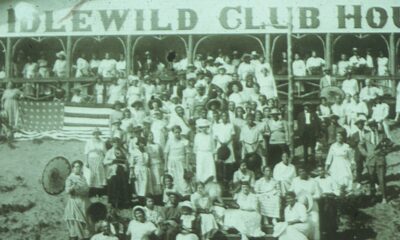
 Black History4 years ago
Black History4 years ago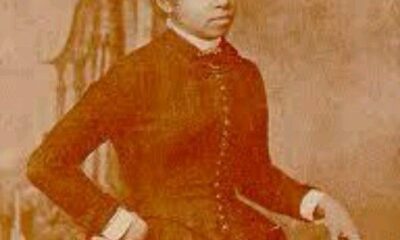
 Black History5 years ago
Black History5 years ago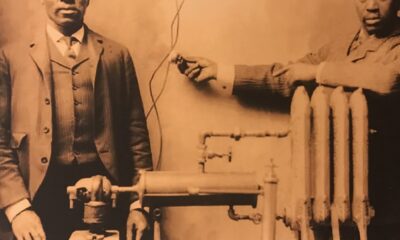
 Black History3 years ago
Black History3 years ago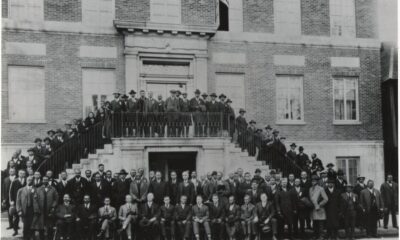
 Black History4 years ago
Black History4 years ago
 Black History8 years ago
Black History8 years ago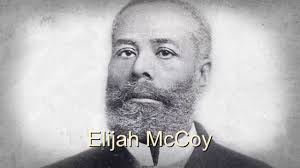
 Black History5 years ago
Black History5 years ago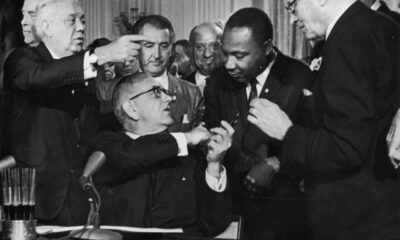
 Black History4 years ago
Black History4 years ago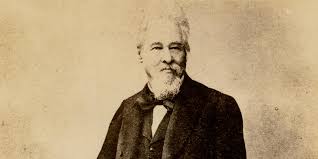
 Black History5 years ago
Black History5 years ago





